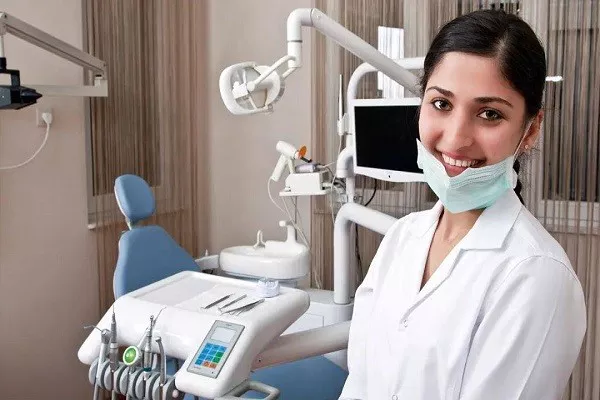A straight and confident smile is something many people desire, but traditional metal braces can be a deterrent due to their visibility and discomfort. Fortunately, advances in orthodontic technology have given rise to a discreet and convenient alternative: invisible aligners. In this article, we will explore how invisible aligners work, the science behind them, and why they have become a popular choice for orthodontic treatment.
The Basics of Invisible Aligners
Invisible aligners are a type of orthodontic treatment that involves the use of custom-made, clear plastic trays to gradually reposition and align teeth. Unlike traditional braces, which use metal wires and brackets to adjust the teeth, invisible aligners offer a more inconspicuous and comfortable option.
The Step-by-Step Process
The process of getting and using invisible aligners typically involves several steps:
Initial Consultation:
The journey begins with an initial consultation with an orthodontist or a dentist experienced in orthodontics. During this appointment, the professional assesses your dental condition, discusses your treatment goals, and determines whether invisible aligners are a suitable option for you.
Digital Impressions or Molds:
If you are a good candidate for invisible aligners, the next step involves creating a 3D digital impression of your teeth. This can be done using a digital scanner or by taking traditional molds. These impressions are used to design your custom aligner trays.
Treatment Plan:
Based on the digital impressions, a treatment plan is created. This plan outlines the series of aligner trays you will receive and the gradual adjustments they will make to your teeth.
Custom Aligner Fabrication:
Using advanced computer-aided design (CAD) and computer-aided manufacturing (CAM) technologies, your custom aligner trays are fabricated. These trays are made from clear, BPA-free plastic and are designed to fit your teeth snugly.
Wearing the Aligners:
Once your aligner trays are ready, you will receive a series of them. Each set is typically worn for about two weeks before progressing to the next set in the series. You should wear your aligners for 20-22 hours a day, removing them only for eating, drinking, and oral hygiene.
Gradual Tooth Movement:
The magic of invisible aligners lies in their ability to apply controlled pressure on specific teeth to encourage them to move into the desired positions. Each set of aligners in the series continues the process of gently shifting your teeth.
Regular Check-Ups:
Throughout your treatment, you will have periodic check-ups with your orthodontist or dentist. These appointments allow the provider to monitor your progress, make any necessary adjustments to your treatment plan, and provide you with the next sets of aligner trays.
Completion and Retention:
After you have completed the series of aligners, your teeth should be in their desired positions. However, it’s essential to wear a retainer, typically at night, to maintain the results and prevent any relapse.
The Science Behind Invisible Aligners
Invisible aligners are designed based on principles of orthodontics and biomechanics. Here’s how they work:
Precise Force Application:
Each set of aligner trays is carefully designed to apply controlled and specific forces to your teeth. These forces help move the teeth into their intended positions.
Gradual Tooth Movement:
Invisible aligners work by incrementally changing the alignment of your teeth. Each set of trays makes slight adjustments, and over time, these cumulative changes result in a straighter smile.
3D Modeling:
The use of 3D digital impressions allows for precise modeling of your teeth and the development of an individualized treatment plan. This level of customization ensures that each aligner is tailored to your unique dental needs.
Predictable Outcomes:
Advanced computer software and algorithms help predict how your teeth will move during each stage of treatment. This predictability allows orthodontists to plan the entire treatment course accurately.
Advantages of Invisible Aligners
Invisible aligners offer several advantages over traditional braces:
Aesthetic Appeal:
As the name suggests, invisible aligners are nearly invisible when worn, making them a discreet option for orthodontic treatment.
Comfort:
Aligners are made from smooth, comfortable plastic, eliminating the discomfort and irritation associated with metal braces.
Removability:
Aligners can be removed for eating, drinking, brushing, and flossing, allowing for better oral hygiene and dietary freedom.
Predictable Treatment:
The use of advanced technology makes treatment outcomes more predictable, and patients can see a virtual representation of their expected results.
Convenience:
With fewer in-person appointments and less maintenance than traditional braces, invisible aligners are a convenient option for many people.
Conclusion
Invisible aligners have revolutionized orthodontic treatment by offering a discreet, comfortable, and effective way to achieve a straighter smile. Their underlying science, which combines precise force application with 3D modeling and predictability, has made them a popular choice for both adults and teenagers seeking orthodontic correction. If you’re considering invisible aligners as a treatment option, consult with an experienced orthodontist or dentist who can assess your needs and guide you through the process to achieve the confident smile you desire.
Related Topics:































